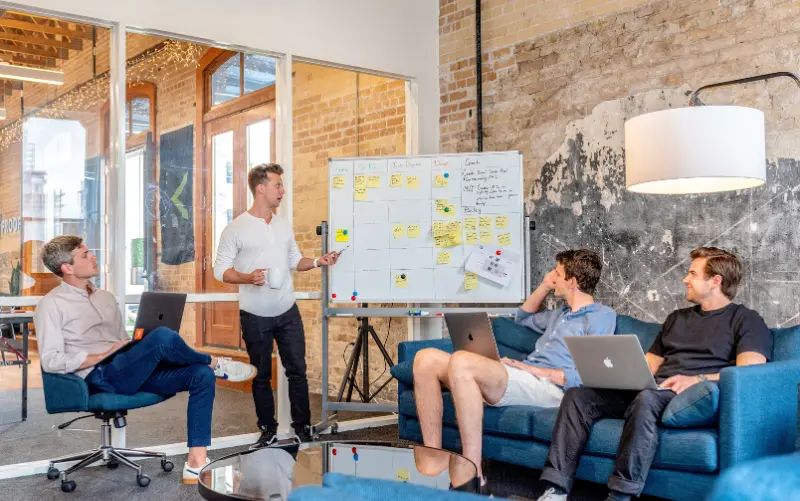In this interview originally published in Authority Magazine, Naomi Owusu, CEO of Tickaroo, offers...
Jumping Off the Bad News Carousel
The press's reputation resembles a drama queen whose interests jump from war to environmental catastrophe and then to the conflict du jour. News with a negative focus predominates, and the reporting is often one-sided in its judgment. Horrific and uncomfortable events cannot be ignored or even denied. But for the new generation of journalists, the question is how to be constructive and solution-oriented while covering these stories in this digital news transformation era. In this article, originally published in German, Naomi Owusu, CEO of Tickaroo, explores the urgency of fostering a commitment to change and answering the call for more diversity in the media landscape with a pioneering spirit.
 Photo by Sumeesh Nagisetty on Unsplash
Photo by Sumeesh Nagisetty on Unsplash
Decentralization and Keeping the Facts in Check
Media scholars agree that media has the power to create reality in readers' minds. Misrepresentations in reporting can lead to a distorted view of the world for readers. Untruths, statistics taken out of context, and misleading reports encourage belief in conspiracy theories. Thanks to algorithms suggesting similar stories to read, people suddenly hurtle
en masse
"down the rabbit hole". Like Alice in Wonderland, they chase from one curiosity to the next. The old relationship between the media and the audience is obsolete. The media no longer hold their role as the "fourth estate" alone. Today, practically anyone can report directly from the sidelines as an amateur reporter. This development harbors both opportunities and risks.
Innovative community projects help to ease the transition between the typical top-down power structure and the evolving decentralized approach. Initiatives like “The GuttenPlag Wikis" may point the way to fresh methods to dealing with information and its verification. New journalistic Internet offerings and old media could link up with each other through a kind of "World Wide Web collective" instead of conflicting with each other. For example, the European Fact-Checking Network (EFCSN) is a network of European "fact-checking organizations." "EFCSN" supports journalistic standards together with about 50 other organizations from all over Europe. Such associations help to strengthen a democratic, open society.
From Click Bait to Solutions Journalism
Stories that center on radical protest movements and aggressive behavior instead of argumentative exchange are becoming increasingly prevalent. It's imperative to realize that a fundamental change in strategy in reporting is urgently needed. It has to follow a step-by-step approach because journalism is not a product but a cultural process. Processes and changes involve transitional phases. A few years ago, it was all about reach: "If it bleeds, it leads!" Click baiting is interesting from a marketing point of view, but it does not belong as an attitude in the daily editorial routine of reporters or journalists. Like cheap fast food, it wastes users' time when they are fed articles with lurid claims but without added value and benefit. Journalists should conscientiously pursue the task of providing fact-based, non-sensationalized, and constructive solutions-based journalism.
The effect that (solutions) journalism has on readers should not be underestimated. A study by Stockholm researchers Thomas Eisensee and David Strömberg supports this persuasiveness: They examined how U.S. media reported on some 5,000 events in the years between 1992 and 2002. The result: reporting of comparable disasters greatly varies depending on the broader news climate. The reporting also impacted whether and to what extent victims subsequently receive assistance. Reporters thus share an influential
responsibility for people's attitudes, actions, and lives.
Gaining Trust with Expert Knowledge and Contemporary Approaches
Most recently, after the first lockdown in March 2020, the press itself has become the subject of public debate. The good news is that the furore has died down. According to a long-term study by the universities of Mainz and Düsseldorf, the media regained more trust because of their reporting. The reason seemingly lies in solutions journalism. If the media doesn't feign omniscience but rather presents the facts stated by the experts, credibility is built and maintained. For example, not all publications put themselves on the same level as scientists and other experts during the Covid 19 crisis, thereby developing a better reputation. Good or constructive messages also convey authenticity.
In contrast, mistrust is toxic and often occurs when people require more information and feel their concerns and problems are not addressed. An example is when only negative subjects get headlines, even though good things are also happening. Contemporary approaches can be found in the U.S. or Denmark and are gradually establishing themselves in German newsrooms as well: Liveblogs, for example, are being used more and more for good news, as the SZ, Zeit, and others are doing. ARD Aktuell and Deutsche Welle are also participating in initiatives to carry out investigative journalistic projects.
From an analysis of the British Guardian, which has been testing solutions journalism for several years, it becomes clear: Constructive articles are read more extensively, and the likelihood consumers will share such content is outstandingly high. This approach inevitably boosts sales figures. Another trust-building factor is that most media outlets transparently correct errors after or even before a Press Council complaint, according to the 2021 annual report of the "Organ of Voluntary Self-Regulation of the Press."
Combating News Fatigue and Loss of Confidence
Due to the rapid flow of information, young people, in particular, perceive news as tiring and depressing. These findings are the result of a study conducted by Bayer Vital GmbH to survey the trust of children and young people in Germany:
-
More than a third of young people suspect that the media deliberately withholds important information (37.9 percent) and only disseminates their own opinions (32.8 percent).
-
Trust in public institutions, such as government agencies or political organizations, is only moderately pronounced among young people. Only one in two young people trusts the German government (53.9 percent) or the United Nations (54.0 percent).
-
In contrast, scientists (76.1 percent), courts (76.2 percent), and police (79.9 percent) enjoy significantly higher levels of trust.
To build trust, journalists must find a balance between different views, interpretations, and opinions. It helps to explain that there are several concerns or theories about the same issue. When a variety of nuances are presented, readers not only have more agency but also feel heard. After all, a lack of diversity in coverage leads to uncertainty, followed by a loss of trust. By not following a multi-faceted approach, the drama carrousel will continue to spin.
Creating Trust and Change: The Foundation for Solutions Journalism
Democracy needs reporters who strive to build trust, thereby allowing for the formation of an informed political opinion. Fresh approaches to handling, verifying, and presenting information are required. There is an urgent need to commit to change and answer the call for more diversity in the media landscape with a pioneering spirit. But without strategies, formalized concepts, and recognizable measures to restore the necessary constructiveness to journalism, these fresh approaches are not sustainable. Experienced professionals and entrenched systems must remain open to new methods, formats, and willing to learn. Only in this way can we build on the foundation of balanced reporting to win back the trust of the younger generation. The process never stops.






Blog comments